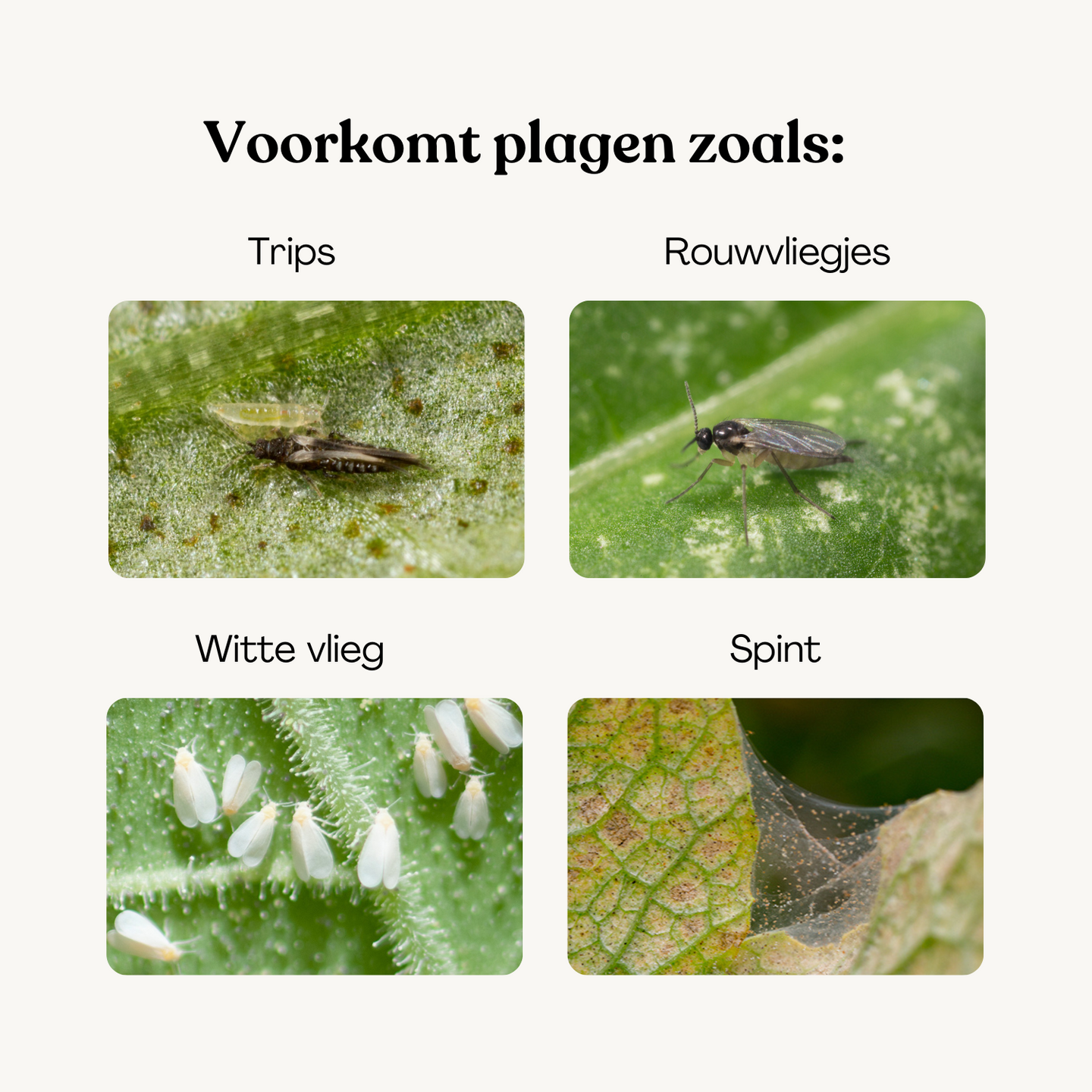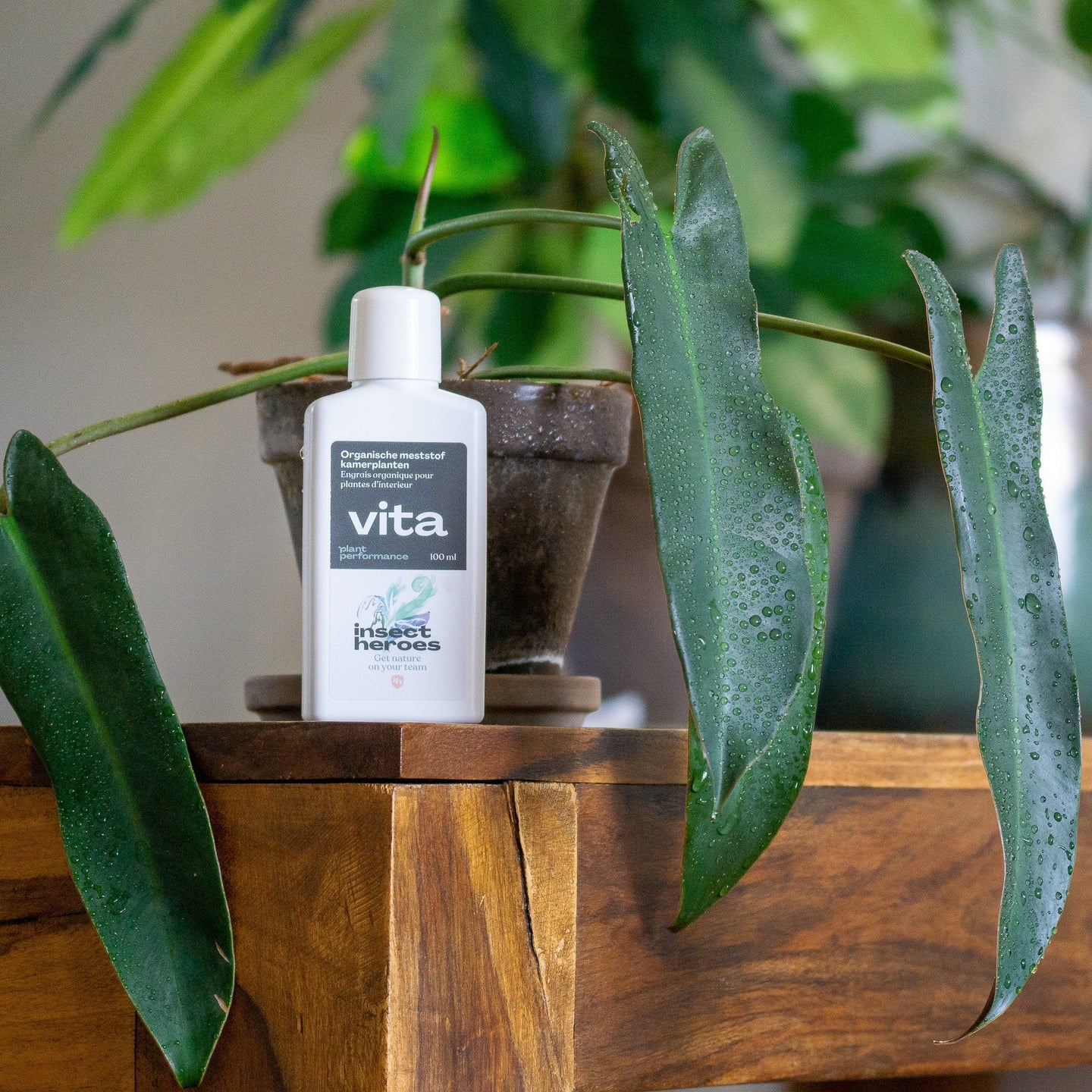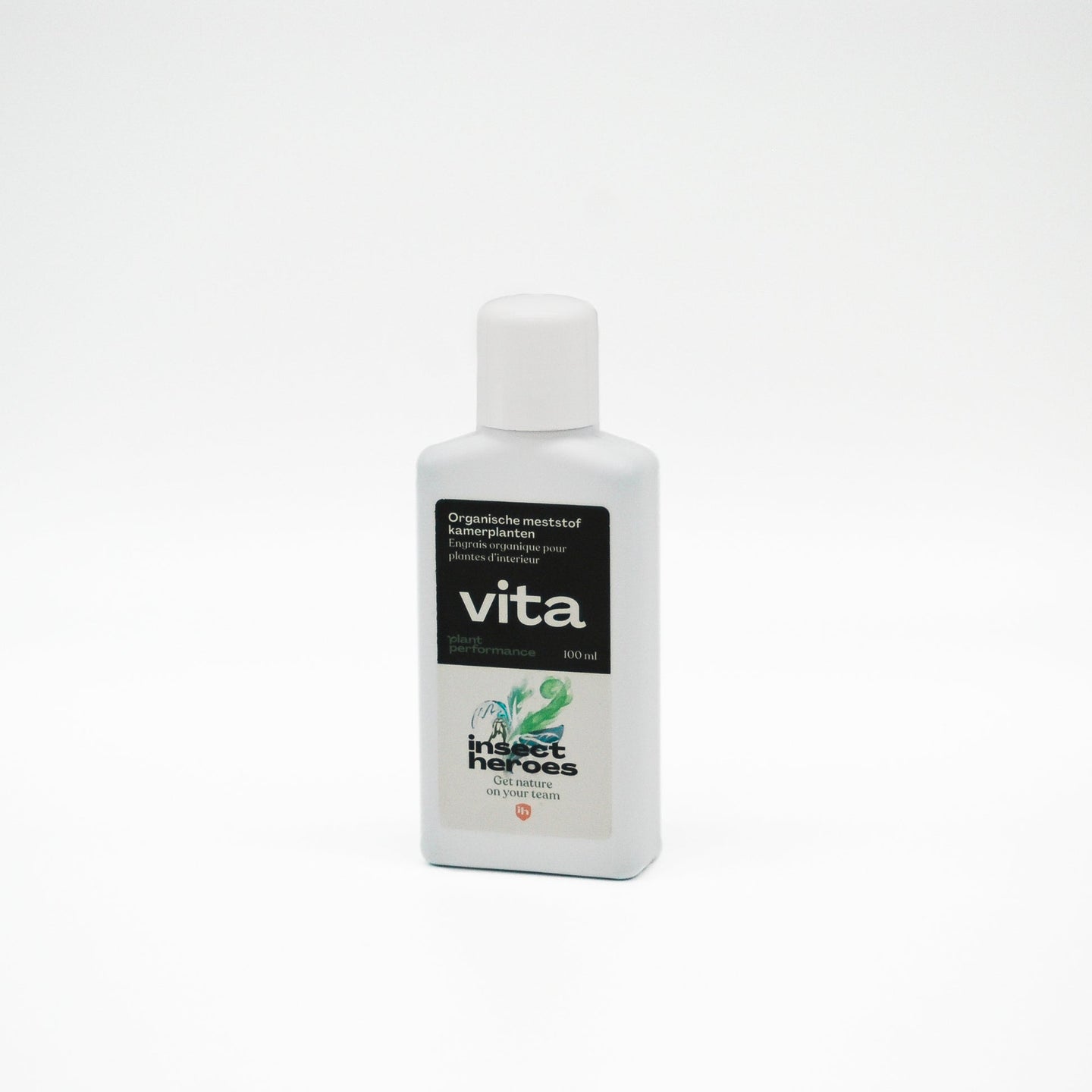Preventing pests
The right amount of water
- Make sure that excess water can drain easily into the pots of your plants. This prevents the soil from becoming too moist, which promotes root rot and attracts fungus flies. Use pots with drainage holes and avoid overwatering.
- Place sand, gravel or hydro granules on top of the soil to prevent fungus flies, for example, from laying eggs.
- Allow the top layer of soil to dry between waterings. This creates a less inviting surface for the mourning flies.
Completely upside down
Pest insects often hide on the underside of leaves. Here they suck on the veins of the leaf. It is therefore highly advisable to occasionally lift a leaf and look under it. This way you will certainly recognize a pest earlier. And as soon as you discover an animal, you can immediately take action. An incipient infestation is much easier to combat than an advanced infection. Spider mites on the underside of the leaf
Spider mites on the underside of the leafGive your plant a bath
Many tropical houseplants like to be rinsed occasionally. This way you remove the layer of dust on the leaves, allowing the leaves to breathe better. An additional advantage of a shower is that you can also rinse away pest insects. Place the plant outside or in the shower and rinse the plant. Make sure that the roots do not get too much water, for example by covering the pot with a garbage bag.
You can also clean the leaves with our specially developed Plant Soap spray . Also a way to keep the leaves clean and dust-free. After this, you can possibly deploy preventive fighters.
Tip: check in advance whether your plant can tolerate a water bath. Plants with hairs or waxy leaves cannot cope well with this. For example, the pancake plant or Sansevieria. Plants that can withstand a shower are ferns, grass lilies, Dracaena and Aspidistra.
Plants also like to feast
To grow, people need food and drink. This applies equally to plants! Once you have purchased or planted a plant, the roots of the plant will absorb the nutrients from the soil. After a few months the nutrients are used up and it is advisable to give some new food.Plants grow when there is more light, in spring and summer. This is called the growing season. The growing season is the ideal time to spoil plants with some nutrition. For example, give Vita organic fertilizer for houseplants . Outside the growing season, the plants do not need extra nutrition.
The type of feeding and frequency of feeding depends on the type of plant. Here too, always check whether the plant can tolerate food. Do not give the plant too much nutrition: this is harmful to the roots. Therefore, follow the guidelines on the packaging.















































